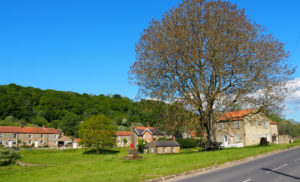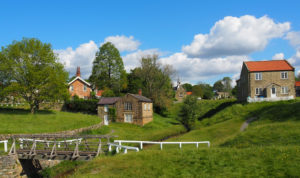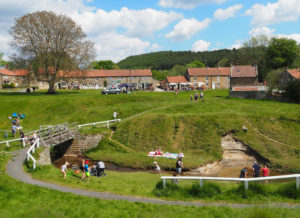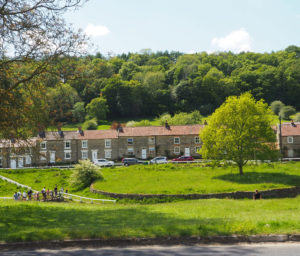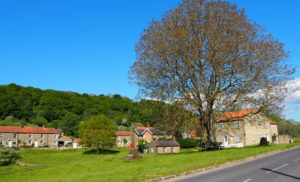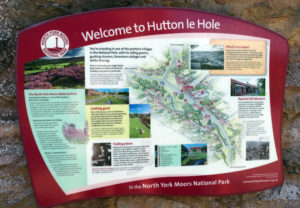Hutton le Hole is often described as one of the prettiest villages in the North York Moors National Park with Hutton Beck running down the green, flanked by stone built cottages.
It is popular with locals and day trippers in the know, who picnic on the green while children paddle in the stream.
Unlike the nearby honey pot of “Thornton le Dale,”:https://www.silvertraveladvisor.com/review/place/209340 Thornton le Dale, Hutton le Hole doesn’t actively promote itself to casual visitors through its website, although there is an information board in the village.
The village is mentioned in Domesday with the name Hoton. The name is Saxon with ‘ton’ meaning farmstead. Many Saxon words can still be seen in names around the village. Toft was the the name given to their houses. Garths were small animal enclosures. The name changed over the centuries becoming Hutton le Hole by the C17th.
Most of the houses date from 1650-1750 during a period of growing prosperity. Most of the inhabitants were Quakers who worked either as weavers or as smallholders. Flax was grown in the village and used to make linen cloth. There was a national effort to encourage home production of cloth and it was compulsory for bodies to be buried in English cloth.
A Meeting House was built in 1689 on the west side of the village but was sold in 1859 and is now a private home. Locals still have the right to graze sheep on the green. C18th parish records indicate there were also lime burners, ironstone miners, blacksmiths, joiners, shoemakers and many other tradesmen. During the Victorian era, the village was described as “lll-planned and untidy… looked down on by the gentry…overcrowded homes of weavers, smallholders and labourers… Manure was piled everywhere and the beck was the common sewer.”
St Chad’s Church, set back from the road and surrounded by trees, was built in 1934. Services had been held in the village school until the parish bought a redundant Zion Chapel in 1901. This was torn down and present church built next to it. The inside is equally as simple.
Hutton le Hole has changed out of all recognition and is now an attractive and very desirable place. The old school erected by public subscription in 1773 is is now a cafe with a self catering apartment. Houses are well cared for. There is a pub and very good tea room and many craftsmen have their studios here.
The main attraction is the “Ryedale Folk Museum.”:https://www.ryedalefolkmuseum.co.uk/
There is also a popular “walk”:https://www.northyorkmoors.org.uk/visiting/enjoy-outdoors/walking/our-walks/walking-routes/hutton-le-hole-and-lastingham/Hutton-le-Hole-and-Lastingham.pdf to nearby Lastingham, with its Norman crypt in the church.
There is paid parking in the Crown car park, or in the National Park car park on Moor Lane.
